Archive for September, 2020
What to Consider Before Looking at Ex-Demo Vehicles?
Any time one steps into the market in search of a new car, it would be remiss to think that the best deal is certain to be a new vehicle. In fact, ex-demonstrator cars have a particularly solid reputation when it comes to great value. But if you really want to stretch your money further, it pays to know a little more about the ins and outs of ex-demo vehicles. Let’s take a closer look.
What is an ex-demonstrator car?
An ex-demonstrator car is a vehicle from the dealer’s showroom that has been used as a test car among prospective new car buyers. Beyond that, it may have also been loaned out to a potential customer so they can spend a bit of time familiarising themselves with the vehicle over a weekend before deciding whether it fits their needs or not.
Quite often, manufacturers may agree to assign dealers ex-demonstrator cars from a popular series for their own use. Whatever the case, the allure of an ex-demo car is that it is almost brand new, with less than 5000km on the odometer and generally not more than a couple months old.
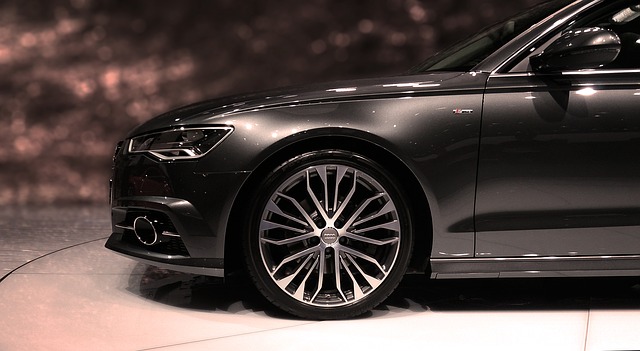
What sort of savings can I expect from an ex-demo car?
It’s one of the first things that comes to everyone’s mind when they think of ex-demo cars – big savings! And while that can certainly be the case, the savings on any specific car will depend on a number of factors. Among these, none is more pertinent than the model of the vehicle in question.
Some popular models are earmarked as vehicles that a dealer may want to move on quickly, particularly if they have abundant stock. Furthermore, the price of the vehicle will dictate the extent of any discount that could be offered. There is only so much you can strip away from the retail price before the dealer knows they will have other buyers enter the showroom.
But beyond that, you also need to take into consideration the condition of the car, as well as just how many kilometres it has got through. The idea of being able to save thousands is not out of the question, provided all these factors align favourably for a buyer.
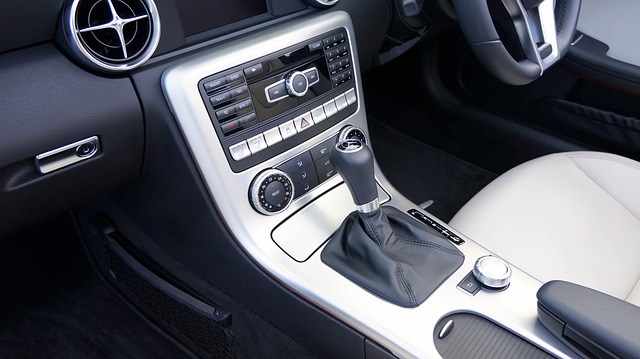
Is there anything to be aware of when buying an ex-demo vehicle?
Whether it be general tips to get ahead, or points to be wary, take heed of these things before you commit to purchase an ex-demonstrator vehicle:
- Ensure that the car’s warranty coverage starts the day you buy the vehicle (e. not before)
- Inspect the vehicle closely for any damage or unreasonable signs of wear – this extends beyond the exterior, as many people will have stepped inside the car
- Buying a car towards the end of its demonstrator period (i.e. 2-3 months) will afford you the best timing to negotiate a lower price
- Once made available, ex-demo cars often sell quite quickly, so have your vehicle finance lined up
- Inspect all paperwork closely to verify that the registration is being transferred as well
Tucson’s Fourth Generation Is Ready For The World
As foreshadowed in early September, the drastically facelifted Tucson range was officially unveiled on September 15. Now in its fourth generation, the world platform Hyundai Motor Company Tucson brings a short and long wheelbase to further broaden its already large customer appeal. With a timeline stretching back to 2004, and racking up over seven million sales, the new Tucson brings striking new looks and a solid set of tech. There are new engines including a pair of hybrid drive-lines, with a PHEV being one. This isn’t yet in concrete for Australia.
There are new engines including a pair of hybrid drive-lines, with a PHEV being one. This isn’t yet in concrete for Australia.
Thomas Schemera, Executive Vice President, Head of Product Division at Hyundai Motor Group said at the launch: “We are thrilled to introduce the all-new Tucson, the latest model in Hyundai’s SUV transformation,” said . “This exciting vehicle sets a new benchmark for innovation in its segment, delivering an impressive blend of design, technology, packaging and performance.” The new Tucson is scheduled for Korean release in September 2020, with models yet to be determined currently stated to arrive in Australia in the first half of 2021. The launch itself was held as a virtual event and shown on the company’s new social media outlet, Hyundai TV, a global contents platform and interactive application for Smart TVs.
Design: it’s what Hyundai have labelled their Sensuous Sportiness idenity. Standing front and centre, literally in this case, is the dazzling new face of the Tucson, from what is called Parametric Dynamics in Hyundai-speak. The Tucson’s body features a set of geometrically intense lines and the front end is a series of “jewel surface” units which hide the head- and driving lights. When lit, they form a boomerang-like shape that then becomes a grille defining area.
The front guards flare before tapering to a sharp point in the front doors. This draws the eyes towards the rear doors that both flare and bring a trapezoid bulge to the redesigned, twin vertical-single horizontal tail-lights. There is a chrome strip that runs from the wing mirror, following the roofline that terminates in conjunction with the newly designed rear lights, which, like the front, are only visible when lit. A subtle touch is the relocation of the Hyundai logo into the rear glass and a hidden look to the rear wiper.
For the petrol engined versions there will be seven exterior colours: White Cream, Phantom Black, Shimmering Silver, Nocturne Gray, Amazon Gray, Flame Red, and Intense Blue, six of which are new for Tucson. In the hybrid range there are White Cream, Phantom Black, Shimmering Silver, and Intense Blue, three of which are new for Tucson.
Inside: It’s a choice of cloth or leather, black or grey for the trims. The SUV’s interior environments come in black or grey tones in either cloth or leather material. Hyundai have upped the visual ante by redesigning the way the cabin looks, with ambient lighting in the top level models, new screens and a refresh of the seating.
Termed Interspace, Hyundai blends the dash with the doors, there’s a sense of more space, a pair of silver lines mimic those on the roof by running from front to rear, and those ambient lights have 64 varying shades. There are also ten levels of brightness. From the front seats, the view is of a pair of 10.25 inch touchscreens (model dependent) with split-screen navigation ability and voice recognition which can enable the new Multi-Command function that allows customers to “warm-up the car”. This covers the heating system, heated steering wheel and seat warmers all via a voice command. There is a driver’s display without a binnacle, and a refreshed look to the air-vents. Some models will have 8.0 inch screens with wireless connectivity for Android Auto and Apple CarPlay plus two phones simultaneously. Spread around the cabin is a new range of soft-touch materials that also visually add class. For the second row, a fold and dive mechanism aims for a flatter surface and an increased cargo capacity, now up to 1,095L of space.
From the front seats, the view is of a pair of 10.25 inch touchscreens (model dependent) with split-screen navigation ability and voice recognition which can enable the new Multi-Command function that allows customers to “warm-up the car”. This covers the heating system, heated steering wheel and seat warmers all via a voice command. There is a driver’s display without a binnacle, and a refreshed look to the air-vents. Some models will have 8.0 inch screens with wireless connectivity for Android Auto and Apple CarPlay plus two phones simultaneously. Spread around the cabin is a new range of soft-touch materials that also visually add class. For the second row, a fold and dive mechanism aims for a flatter surface and an increased cargo capacity, now up to 1,095L of space. A service called Hyundai Digital Key enables drivers to use their smartphone to pair to the car and remotely lock/unlock, and start the engine and climate control from up to 27 metres away. A new feature is called car To Home, and this can allow activation, from the vehicle, of connected smart devices at home. Audio comes from multi-speaker systems thanks to Bose (model dependent). For the climate control, Hyundai looked towards the aerospace industry and used certain benchmarks for their direct and indirect ventilation processes and can indicate levels of pollution in real time in the climate control display.
A service called Hyundai Digital Key enables drivers to use their smartphone to pair to the car and remotely lock/unlock, and start the engine and climate control from up to 27 metres away. A new feature is called car To Home, and this can allow activation, from the vehicle, of connected smart devices at home. Audio comes from multi-speaker systems thanks to Bose (model dependent). For the climate control, Hyundai looked towards the aerospace industry and used certain benchmarks for their direct and indirect ventilation processes and can indicate levels of pollution in real time in the climate control display. Engines: As mentioned, a pair of hybrids with one a PHEV, with a 1.6L engine for either, or a 2.5L direct-injection petrol engine with 141kW and 246Nm driving a slick eight speed auto. The hybrids should punch around 134kW from the petrol engine and combine with the battery for 171kW. Torque will be close to 250Nm from the petrol and offer just under 350Nm combined, and again run an eight speed auto. Hyundai have engineered in their Continuously Variable Valve Duration (CVVD) technology that manages valve opening duration for optimal power, efficiency and emissions with minimised compromise.
Engines: As mentioned, a pair of hybrids with one a PHEV, with a 1.6L engine for either, or a 2.5L direct-injection petrol engine with 141kW and 246Nm driving a slick eight speed auto. The hybrids should punch around 134kW from the petrol engine and combine with the battery for 171kW. Torque will be close to 250Nm from the petrol and offer just under 350Nm combined, and again run an eight speed auto. Hyundai have engineered in their Continuously Variable Valve Duration (CVVD) technology that manages valve opening duration for optimal power, efficiency and emissions with minimised compromise.
Vehicles fitted with Hyundai’s HTRAC all-wheel drive system have an upgrade to the driving modes. Depending of end-market, those vehicles will now have Mud, Snow, Sand along with the previously supported Eco / Comfort / Smart / Sport driving modes.
Safety: Hyundai’s broad-scope SmartSense safety package includes: Highway Driving Assist (HDA), Forward Collision-Avoidance Assist (FCA) with pedestrian detection, Lane Keeping Assist (LKA), Lane Following Assist (LFA), Blind-Spot View Monitor and Blind-Spot Collision Warning (BCW). There is also Surround View Monitor, Reverse Parking Collision-Avoidance Assist (RPCA), Remote Smart Parking Assist (RSPA), High Beam Assist (HBA) and Driver Attention Warning (DAW). Extra technology for safety comes from: Blind-Spot Collision-Avoidance Assist (BCA) with Rear Cross-Traffic Collision-Avoidance Assist (RCCA), Advanced Smart Cruise Control (SCC) with Stop and Go, and Safe Exit Warning (SEW).  Tucson N Line Goes Global: Hyundai’s growing performance arm, N Line, is looking to add an N Line Tucson for the global marketplace at an as yet unspecified date.
Tucson N Line Goes Global: Hyundai’s growing performance arm, N Line, is looking to add an N Line Tucson for the global marketplace at an as yet unspecified date.
Contact your Hyundai dealer for more details.
Big Boots Matter
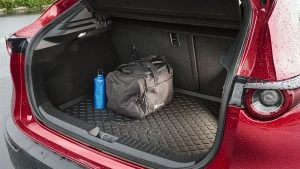
Luggage Space
If size matters to you when it comes to what you can (or can’t) fit in your boot, then how much space is commonly available in popular new car buys? The chances are you’ll want to know, so first are some of the most popular vehicles bought in Australia and their boot volume (litres). All the vehicles listed have their rear seats in place, because we all know the greatest vehicles carry a decent amount of luggage without having to flip their rear seats flat. There’s nothing worse than telling little Johnny that he can’t travel with his mates because the split folding rear seats have been split folded to take the school camp food!
At the end is a list of the best picks for carrying 550 litres or more behind the rear seats. You might be surprised, or not…
Supermini
Average boot space: 340.88 litres
1/ Renault Clio – 395 litres
2/ Honda Jazz – 354 litres
3/ Volkswagen Polo – 351 litres
Audi A1 – 335 litres
Skoda Fabia – 330 litres
Hyundai i20 – 326 litres
Kia Rio – 325 litres
Peugeot 208 – 311 litres
Hatchbacks
Average boot space: 479.40 litres
1/ Skoda Octavia 590 litres
2/ Peugeot 308 501 litres
3/ Honda Civic 492 litres
Renault Megane 434
VW Golf 380 litres
Small 4-door sedan
Average boot space: 464.75 litres
1/ Honda City | 536 litres
2/ Honda Civic | 519 litres
3/ Renault Megane | 503 litres
Kia Cerato | 502 litres
Toyota Corolla | 470 litres
Hyundai Accent Sport | 465 litres
Hyundai Elantra | 458 litres
Holden Astra | 445 litres
Mazda 3 444 litres
Audi A3 | 425 litres
Mazda 2 410 litres
Mitsubishi Lancer | 400 litres
Medium 4-Door Sedan
Average boot space: 501.82 litres
1/ Volkswagen Passat | 586 litres
2/ Skoda Octavia | 568 litres
3/ Toyota Camry | 524 litres
Kia Optima | 510 litres
Hyundai Sonata | 510 litres
Subaru Liberty | 493 litres
BMW 3 Series | 480 litres
Mazda 6 | 474 litres
Subaru Impreza | 460 litres
Ford Mondeo | 458 litres
Honda Accord | 457 litres
Large 4-Door Sedan
Average boot space: 509.2 litres
1/ Skoda Superb | 625 litres
2/ Volkswagen Arteon | 563 litres
3/ Holden Commodore | 490 litres
Chrysler 300 | 462 litres
Kia Stinger | 406 litres
Station wagons
Average boot space: 560.9 litres
1/ Holden Sportwagon 895 litres
2/ Skoda Superb 660 litres
3/ Peugeot 308 SW 660 litres
Ford Focus SW 608 litres
VW Golf SW 605 litres
Hyundai i30 SW 602 litres
Audi A6 SW 586 litres
Volvo V70 575 litres
BMW 5-Series SW 570 litres
Jaguar XF SW 565 litres
Kia Optima SW 552 litres
Ford Mondeo 541 litres
Mercedes Benz E-Class 540 litres
Subaru Levorg 522 litres
Mazda 6 SW 522 litres
Renault Megane SW 521 litres
Subaru Outback 512 litres
Peugeot 407 430 litres
Toyota Corolla SW 392 litres
Mini Clubman SW 360 litres
SUVs
LIGHT SUVs
Average boot space: 346.2 litres
1/ Citroen C3 Aircross – 410 litres
2/ Holden Trax – 356 litres
3/ Hyundai Venue 355 litres
Ford EcoSport – 346 litres
Mazda CX-3 264 litres
SMALL SUVs
Average boot space: 385.91 litres
1/ Jeep Compass 438 litres
2/ Honda HR-V 437 litres
3/ Kia Seltos 433 litres
Nissan Qashqai 430 litres
Renault Kadjar 408 litres
Mitsubishi ASX 393 litres
Toyota C-HR 377 litres
Hyundai Kona 361 litres
Mitsubishi Eclipse Cross 341 litres
Mazda CX-30 317 litres
Subaru XV 310 litres
MEDIUM SUVs
Average boot space: 496.67 litres
1/ Volkswagen Tiguan 615 litres
2/ Toyota RAV4 580 litres
3/ Nissan X-Trail 565 litres
Honda CR-V 522 litres
Subaru Forester 498 litres
Hyundai Tucson 488 litres
Mitsubishi Outlander 477 litres
MG HS 463 litres
Renault Koleos 458 litres
Kia Sportage 446 litres
Mazda CX-5 442 litres
Ford Escape 406 litres
LARGE SUVs
Average boot space: 669.50 litres
1/ Holden Acadia 1042 litres
2/ Holden Equinox 846 litres
3/ Mazda CX-9 810 litres
Toyota LandCruiser Prado 620 litres
Hyundai Santa Fe 547 litres
Toyota Kluger 529 litres
Subaru Outback 512 litres
Ford Everest 450 litres
Keep in mind that most vehicles we buy now do have split folding rear seats, so when we don’t have to carry passengers we can make use of the rear seat space in exchange for carrying cargo/luggage. Many of us don’t want to have to use the rear seat space for luggage; often the back seats are occupied with passengers anyway, so the vehicles that provide over 500 litres behind the back seats are going to be the ones that offer excellent luggage space.
If we look at averages alone, the Large SUV is easily king for luggage carrying duties. Most are seven-seater SUVs, too; but make it just the 5 seats, and they can only be a win/win combination. The next step up would be a van!
However, both the Station Wagon and Large sedan are other excellent options for you to go to for decent luggage carrying ability. Even the Medium Sedan offers some cars that provide excellent big boots: the Volkswagen Passat (586 litres), Skoda Octavia (568 litres) and the Toyota Camry (524 litres) are the best examples.
One thing that did surprise me was that the boot space in a small SUV isn’t much to write home about; its average for the class being a dismal 385.91 litres. This dropped to an abysmal 346.2 litres for light SUVs. These vehicles, and smaller are best avoided if decent boot space is what you need.
Any vehicle that can offer at least 550 litres of luggage space in the boot without having to fold down any of the rear seats is a winner for cargo carriers. If you are looking for a vehicle (that isn’t a van) that will deliver good boot space (550 litres or more) for things like: school bags, computer equipment, sport gear, holiday luggage etc., then you’ll probably need one of the following vehicles:
Hatchback:
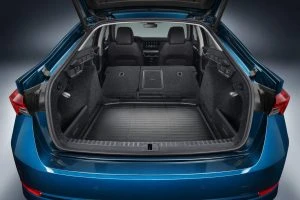
Skoda Octavia Hatchback
Skoda Octavia Hatchback 590 litres
Medium 4-dr Sedan:
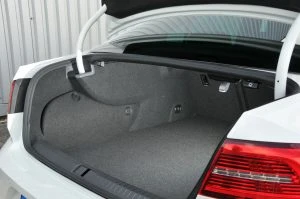
VW Passat Sedan
Volkswagen Passat 586 litres
Skoda Octavia 568 litres
Large 4-dr Sedan
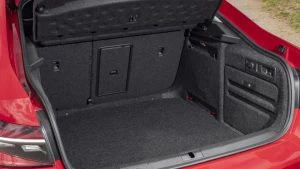
Skoda Superb Sedan/Hatch
Skoda Superb 625 litres
Volkswagen Arteon 563 litres
Station Wagon

Holden Commodore Sportwagon
Holden Sportwagon 895 litres
Skoda Superb 660 litres
Peugeot 308 660 litres
Ford Focus 608 litres
VW Golf 605 litres
Hyundai i30 602 litres
Audi A6 586 litres
Volvo V70 575 litres
BMW 5-Series 570 litres
Jaguar XF 565 litres
Kia Optima 552 litres
Medium SUV
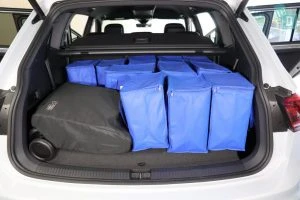
VW Tiguan SUV
Volkswagen Tiguan 615 litres
Toyota RAV4 580 litres
Nissan X-Trail 565 litres
Large SUV
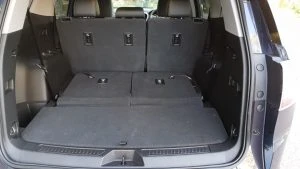
Holden Acadia 7-seater
Holden Acadia 1042 litres
Holden Equinox 846 litres
Mazda CX-9 810 litres
Toyota LandCruiser Prado 620 litres
Hyundai Santa Fe 547 litres
Kia Confirms Sorento Details For Australia.
 Kia has officially unveiled the forthcoming 2021MY Sorento. To be available in a four trim model range and coming with either a 3.5L V6 petrol engine or a refined 2.2L diesel, with an auto for the petrol and a DCT (dual clutch transmission) for the diesel, the Sorento has been sharpened, redesigned, and upgraded across the board. It’s also the first new Kia to be built upon the brand’s ‘N3’ SUV platform.
Kia has officially unveiled the forthcoming 2021MY Sorento. To be available in a four trim model range and coming with either a 3.5L V6 petrol engine or a refined 2.2L diesel, with an auto for the petrol and a DCT (dual clutch transmission) for the diesel, the Sorento has been sharpened, redesigned, and upgraded across the board. It’s also the first new Kia to be built upon the brand’s ‘N3’ SUV platform.
The four levels are: S, Sport, Sport +, and GT-Line. The petrol engine will drive the front wheels, the diesel will be powering all four corners. The petrol engine will deliver 200kW and 332Nm, with the diesel spinning Kia’s new wet-clutch DCT. Power from the 2.2L engine is 148kW and delivers torque of 440Nm. The engine itself now has a alloy head and this reduces weight by close to 20kg.
Pricing starts from $45,850 RRP and $46,990 drive-away for the 2WD petrol S. The Sport starts from $48,470 RRP and $49,990 drive-away with the Sport+ at $52,850 RRP and $54,390 drive-away. The GT-Line Petrol sees $60,070 RRP and $61,990 drive-away. Premium paint is a $695 option.
For the diesels in the same trim levels, Kia says the S will start from $48,850 RRP and $49,990. The Sport starts at $51,470 RRP and drive-away at $52,990. In Sport+ trim it’s $55,850 RRP and $57,390 drive-away. GT-Line is $63,070 RRP and $64,990 drive-away. To be built at the Hwasung plant in Korea, the Sorento will come with Kia’s 7-Year unlimited kilometre Warranty, 7-Year Capped Price Service, and 7-Year Roadside Assist. “The outgoing Sorento was a game-changer in the Australian market with previously untapped safety and convenience levels in the segment _ and the all-new model continues to take that story forward,” Kia Motors Australia Chief Operating Officer Damien Meredith said. “Across the four trim levels we believe the Sorento will meet the needs, and exceed the expectations, of anyone shopping in the seven-seat SUV market.” Mr Meredith said that Sorento’s evolution over the last 18 years echoes that of the Kia brand as a whole. “While the car was initially launched in 2002 as a utilitarian body on frame all-terrain vehicle, it quickly evolved into a more luxurious monocoque construction and now, in its fourth generation, Sorento has been transformed into something once again more desirable.”
“The outgoing Sorento was a game-changer in the Australian market with previously untapped safety and convenience levels in the segment _ and the all-new model continues to take that story forward,” Kia Motors Australia Chief Operating Officer Damien Meredith said. “Across the four trim levels we believe the Sorento will meet the needs, and exceed the expectations, of anyone shopping in the seven-seat SUV market.” Mr Meredith said that Sorento’s evolution over the last 18 years echoes that of the Kia brand as a whole. “While the car was initially launched in 2002 as a utilitarian body on frame all-terrain vehicle, it quickly evolved into a more luxurious monocoque construction and now, in its fourth generation, Sorento has been transformed into something once again more desirable.”
The exterior design cues start with the signature “tiger grille” and the headlights have a “tiger eye LED DRL. Much like the recently revealed Carnival, lines draw the eye to the headlight design which further creates a tiger face impression. The lower air intake has been revised too, with a more rectangular shape, and again similar to Carnival has wing shaped air curtains to funnel air. Restyled tail lights do away with the formerly horizontally oriented design, and now have a pair of vertically strips with an uppermost angle-forward design that echoes the rear window’s trailing edge. As is common with updates, there has been a change in size. Width is up by 10mm to 1,900mm. Length is up by the same to 4,810mm however the front and rear overhangs have been subtly reduced which makes the Sorento look longer. In between is a wheelbase that’s up by 35mm to 2,815mm.
As is common with updates, there has been a change in size. Width is up by 10mm to 1,900mm. Length is up by the same to 4,810mm however the front and rear overhangs have been subtly reduced which makes the Sorento look longer. In between is a wheelbase that’s up by 35mm to 2,815mm.
The new model is 1900mm wide, 10mm wider than the third-generation Sorento. In profile, the proportions of the Sorento are subtly adapted to make it appear longer. The new model is 10mm longer than its predecessor (now 4810mm), yet it features shorter front and rear overhangs. The additional length is found in the wheelbase (a result of the Sorento’s new platform), which has grown by 35mm to 2815mm.  The A-pillar has been pushed back by 30mm and leads to a 10mm taller roofline. New styling cues are found with the shark-fin on the C-pillar and the completely redesigned tail lights. The model’s name is emblazoned across the tailgate. Colourwise the new Sorento will offer seven exterior paint finishes with Clear White the standard, plus six Premiums: Mineral Blue (New Colour), Snow White Pearl, Steel Grey, Silky Silver, Aurora Black and Gravity Blue. All trims will have a full-size spare in 17-inch, 18-inch, 19-inch or 20-inch depending on trim level.
The A-pillar has been pushed back by 30mm and leads to a 10mm taller roofline. New styling cues are found with the shark-fin on the C-pillar and the completely redesigned tail lights. The model’s name is emblazoned across the tailgate. Colourwise the new Sorento will offer seven exterior paint finishes with Clear White the standard, plus six Premiums: Mineral Blue (New Colour), Snow White Pearl, Steel Grey, Silky Silver, Aurora Black and Gravity Blue. All trims will have a full-size spare in 17-inch, 18-inch, 19-inch or 20-inch depending on trim level.
The interior also has had the wand waved. The GT-Line will have mood lighting in the door trim and from underneath the dashboard, and will have a pair of digital displays which at 12.3 inch (GT-Line) and 10.25 inch (Sport, Sport+ and GT-Line, 8.0 in S) that will control most of the car’s functions. The layout will provide an almost ultra-widescreen experience. Capacitive touch buttons on the screen sides will provide the control options. Trim materials across the range have been revised with embossed black cloth, leather appointed black cloth and black quilted Nappa leather appointed seats being available depending on the model chosen. Increasing the wheelbase sees cargo and passenger carrying ability increased with 616L growing to 2,011L with all seats folded. With the third row raised there is still 187L available, an increase of 32% compared to the previous model. Controls for the rear seat passengers see a soft touch button to fold the second row. These also have a sliding increase of 45mm for extra access. Third row passengers have an armrest that has increased by 100mm and incorporate a smartphone tray and cupholder.
Increasing the wheelbase sees cargo and passenger carrying ability increased with 616L growing to 2,011L with all seats folded. With the third row raised there is still 187L available, an increase of 32% compared to the previous model. Controls for the rear seat passengers see a soft touch button to fold the second row. These also have a sliding increase of 45mm for extra access. Third row passengers have an armrest that has increased by 100mm and incorporate a smartphone tray and cupholder.
Ride and handling will be improved in the new 2021 Sorento; the increased wheelbase partners with a 4% tighter bodyshell (made from steel and aluminuim for strength and weight reduction) for increased rigidity and reduced body vibration. Geometry changes to the suspension have increased road-holding and for those that enjoy some off-road action, a new Terrain mode for the diesel engines, operated via a rotary dial in the centre console, provide better traction in Snow, Mud, and Sand. Convenience features include Bluetooth pairing for two phones, three USB ports up front and two for second row passengers (Sport and GT-Line), plus 12V sockets for the third row passengers. Sport+ and GT-Line offer an extra pair of USBs. GT-Line will have a HUD or Head Up Display and a 12 speaker Bose system for pure sounds. The other three models will have six speaker sound.
Convenience features include Bluetooth pairing for two phones, three USB ports up front and two for second row passengers (Sport and GT-Line), plus 12V sockets for the third row passengers. Sport+ and GT-Line offer an extra pair of USBs. GT-Line will have a HUD or Head Up Display and a 12 speaker Bose system for pure sounds. The other three models will have six speaker sound.
For safety Kia’s Advanced Driver Assist System, ADAS, includes Kia’s Autonomous Emergency Braking technology with pedestrian, cyclist and vehicle detection. This also detects oncoming traffic when making a turn at a junction. The Sorento is also available with Blind-spot View Monitor (GT-Line only), Surround View Monitor (GT-Line) and Blind-spot Collision-avoid Assist, Advanced Smart Cruise Control, Lane Following Assist and Driver Attention Warning. Kia’s ‘level two’ autonomous driving technology, Lane Following Assist (LFA), controls acceleration, braking and steering depending on the vehicles in front. LFA operates between speeds of 0 and 180 kph, using camera and radar sensors to maintain a safe distance from the car in front, while monitoring road markings to keep the Sorento in the centre of its lane. The new Sorento also features a Rear View Monitor (RVM) with Reverse Parking Collision-Avoidance Assist (PCA) (GT-Line only), and Rear Cross-traffic Collision-avoidance Assist (RCCA). In addition, it is also the first Kia available with the company’s new Remote Smart Parking Assist (RSPA) (GT-Line only), which enables drivers to move their car autonomously out of a front-and-back parking space remotely with their key fob. This is designed to make it easier for passengers to get in and out of the car in tight parking spaces or if another driver parks too close to access any of the doors.
The new Sorento also features a Rear View Monitor (RVM) with Reverse Parking Collision-Avoidance Assist (PCA) (GT-Line only), and Rear Cross-traffic Collision-avoidance Assist (RCCA). In addition, it is also the first Kia available with the company’s new Remote Smart Parking Assist (RSPA) (GT-Line only), which enables drivers to move their car autonomously out of a front-and-back parking space remotely with their key fob. This is designed to make it easier for passengers to get in and out of the car in tight parking spaces or if another driver parks too close to access any of the doors.
RSPA brakes the Sorento automatically if it detects another car, cyclist or pedestrian behind the vehicle or crossing behind it. The Sorento’s Safe Exit Assist feature also prevents rear doors from opening if the vehicle detects a hazard approaching from behind, such as a cyclist or another vehicle. Advanced driver assistance systems with new Remote Smart Parking Assist
There are seven airbags which includes a centre airbag but not a kneebag. There is also Kia’s Multi-collision Brake System, a crash mitigation system that engages the brakes when the system’s airbags have been deployed, further adding safety from other potential impacts.
The 2021 Sorento is available for test drives at Kia dealerships.